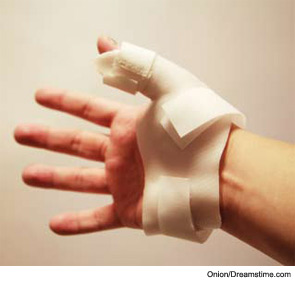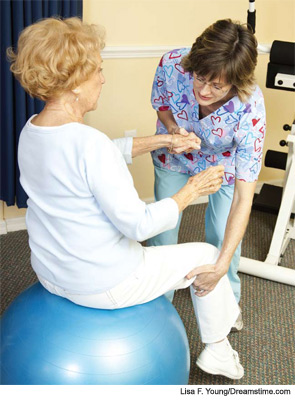
RA is a chronic disease that people must learn to live with for their lifetime. Occupational therapists (OTs) play a pivotal role in assisting patients with RA with functioning in the face of a disease that causes limitations and deformities.
The occupational therapy evaluation process includes a detailed history, range of motion, and strength assessment. Deficits in grip and pinch strength as well as coordination can greatly limit a person’s ability to perform self-care and activities of daily living such as opening jars, turning a key, and fastening clothing. Pain can make some tasks undoable or take much longer to perform, limiting the patient’s ability to complete independent self-care.
The occupational therapist actively involves patients by helping them understand and learn how to manage their disease. When working with patients, we must listen closely to their daily challenges related to their RA. The OT and the patient problem-solve each challenge with the common goal of alleviating pain to allow maximal function and comfort.
Treatment time is spent teaching pain reduction techniques, practicing energy conservation, sharing joint protection techniques, and providing an individualized exercise program. One additional technique for reducing pain and stress on the joints is to provide support and protection though splints. When necessary, an OT can fabricate a custom-made splint to meet specific patient needs.

For long-term success with exercise, it is best to transition people out of the “medical model” and into community-based exercise programs. People need assurance and encouragement from health professionals that they can live the life they choose while making subtle changes in their lifestyle to accommodate their disease.
Visit the ACR website at www.rheumatology.org/practice, and find information on the Standards of Practice for Rheumatology Health Professionals under the Clinical Support menu. Here you will also find standardized outcome measures such as “The Patient Related Wrist Hand Evaluation,” and the “QuickDASH.” These tools can be used in patients with RA to demonstrate change in pain and functional ability related to specific tasks and can be used to demonstrate changes to response to treatment.
Professional organizations such as the Hand Therapy Certification Commission (www.htcc.org) and the American Occupational Therapy Association (www.aota.org) can assist you in finding an occupational therapist in your area.

